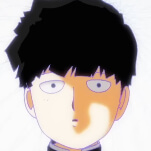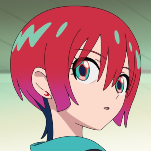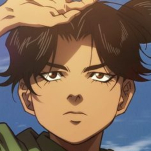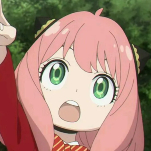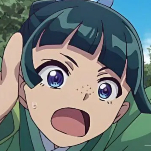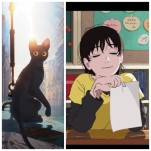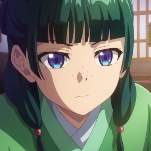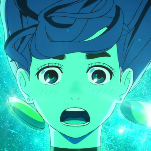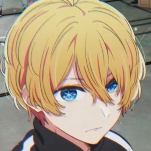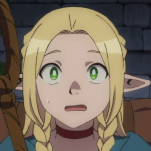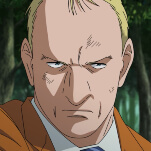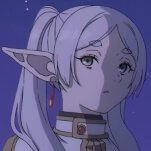The 25 Best Anime Series on Netflix
Photo Courtesy of Netflix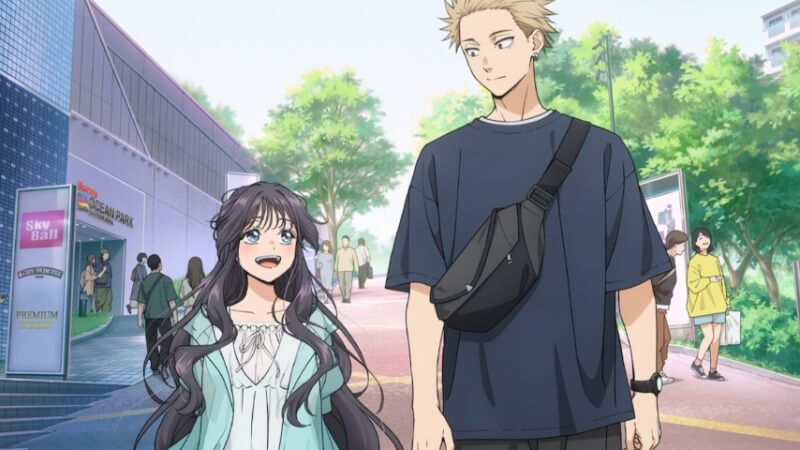
Netflix has added some incredible titles to its anime library in recent years. In addition to quintessential series, there is also a substantial amount of originals that are holding their own against titles already well established in the canon. The streaming service took care to introduce a variety of genres: there are plenty of action, comedy, and romance series to choose from. If you are ready to explore even the weirdest corners of Netflix to find binge-worthy content (and you should be), we are here for you.
Below, the Endless Mode’s writers have cataloged the best anime series on Netflix (starting with our favorites) that are sure to hold the attention of both experienced weebs and anime first-timers alike.
![]()
1. Neon Genesis: Evangelion
By now, most people have at least a cursory awareness of Neon Genesis Evangelion, whether it be from the overwhelming amount of branded merchandise or the consistent references in popular media. But for a show as ingrained in the animation canon as Evangelion, how we discuss it is in constant flux. Initially touted as a meaningful deconstruction of the mecha popularized by Gundam and Macross, the franchise later became bloated and rife with superfluous content much like the melodramas-as-merchandise they lampooned years before.
Nevertheless, Evangelion’s influence is palpable with a cultural overlay that can be seen anywhere from Persona 3 to Gurren Lagann, becoming a phenomenon that seems to exceed the show’s literal text. Much like Star Wars, its original creator Hideaki Anno has lost control of the franchise’s growth and has since augured the end of anime as we know it, once saying Japan’s animation world is “moving by inertia.” — Austin Jones
2. Mob Psycho 100
Shigeo “Mob” Kageyama is a psychic of unquestionable talent. Unfortunately, that’s about all he has going on in the skills department. Based on a web manga by One (One-Punch Man), Mob Psycho 100 is a psychedelic blend of coming-of-age tropes and Ghost Adventures, following Mob as he and his fraudulent mentor, Reigen, solve supernatural problems in Seasoning City. The show’s animation, courtesy of Bones (Fullmetal Alchemist: Brotherhood, My Hero Academia), maintains film-quality action sequences and a trippy, technicolor style throughout, but what really makes it a cut above the rest is its seemingly forgettable star. Mob starts off as an unremarkable boy who just wants to be normal. His dedication to live every day to the fullest is infectious, and by the end, he’s got a hearty cast of confidants and companions. Mob Psycho 100 might attract you with its wackiness, but its moments of emotional clarity will keep you coming back. —Austin Jones
3. Vinland Saga
Based on the long-running manga penned by Makoto Yukimura of Planetes fame, Vinland Saga is a Norse tale told through a humanist lens. It follows Thorfinn, an Icelandic boy living in the early 11th century, who—after enduring a personal tragedy—sets out on a tale of revenge. Or at least, that’s how things initially appear. Despite resembling traditional Scandinavian poems about bloody quests for comeuppance, Thorfinn’s journey is less vainglorious and more tragic. Here warriors aren’t framed as valiant heroes battling for a place in Valhalla, but as sadists and butchers inoculated into a culture of pointless violence. Perhaps the greatest trick this story pulls is that even though it never shies away from human cruelty, it isn’t shot through with cynicism, instead suggesting a better way is just out of reach.
Sure, there is some tonal weirdness in its first season, as it enacts a series of fights that feel less like indictments of bloodshed and more like battle shonen duels between borderline superheroes, but Wit Studio’s animation chops are on such display here that it’s easy to forgive some of the amped-up, meathead shenanigans. And by its second season, these inconsistencies are smoothed over as this story transforms into a full-throated condemnation of the inhumanity of this period, delving into the hardships these characters face due to cruel belief structures and political systems. Between its powerful articulation of its protagonist’s emotional journey and its ability to immerse us in this fraught depiction of Middle Ages Europe, Vinland Saga is a gripping treatise on violence, revenge, and the distant hope for a better world. —Elijah Gonzalez
4. Hunter x Hunter
There are countless shonens (and American TV shows, even) that focus on a group of young characters using supernatural abilities and deductive reasoning to problem solve. Hunter x Hunter is a rare find among this homogeneous archetype because of its attention to detail and emotional investment. This anime is filled with whimsical subplots that don’t always end with a major event, but let you know characters in this world were alive before you started watching them.
Hunter x Hunter begins with Gon Freecss, as he sets out on a journey to become a Hunter. He’s your typical savior-figure protagonist, but fortunately he keeps the annoying, repetitive mantras to himself. His determination to see the best in people becomes a marvel of the series, and his dedication to others drives the plot. He makes friends with a young boy from a family of assassins, and their polarized dynamic creates a connection that makes the series inspiring. The compelling relationship between these two boys demands emotional investment from you. Togashi emphasizes their youth and inexperience by pitting them against much older, more experienced villains, and introduces powerful mentors that help them evolve. He’s meticulous about tailoring his characters’ abilities to their personality, but everyone draws their strength from resolve. The feats of pure determination you’ll witness in this anime will change you.
Togashi has struggled with a medical condition for some years, but he claims the manga is far from over. Hopefully, the remastered anime gets a seventh season soon. —Jarrod Johnson II
5. Monster
Naoki Urasawa is one of the most critically-acclaimed manga writers of his time, adored by the literary community both within and outside of Japan and the author of some of the most densely plotted, character-driven, and experimental manga ever published. So it’s only natural that Monster, Urasawa’s fifth serialized manga and one of his best known outside of Japan, would translate into one of the greatest anime series ever put to the screen. Spanning 74 episodes, the show’s premise unspools in the way only the finest crime-thriller should: patiently, yet purposefully. Dr. Kenzo Tenma’s fall from esteemed brain surgeon to disgraced murder suspect on the run, and his frenzied search for the man who framed him, is a riveting saga from start to finish, darting from one corner of Europe to the next in a deadly contest of wills. If you ever have the chance to watch this series, jump at the opportunity. —Toussaint Egan
6. The Apothecary Diaries
There are plenty of reasons why The Apothecary Diaries is one of the best anime in recent memory, but one of the most straightforward is how good it is at balancing episodic storytelling with its overarching ambitions. Week to week, we watch as our genius apothecary, Maomao, uses her deep knowledge of science and remedies to piece together mysteries within this fictionalized rendition of Ming Dynasty China’s imperial court. These whodunits are deeply entertaining in their own right, detailing complicated conspiracies and alchemic phenomena while offering ample room for our medicinal detective to flex her sharp wit. However, where they gain even more impact is in how these machinations connect to implicit critiques of the power imbalances and misogyny that define this historical setting. For Maomao, cracking these cases is frequently the easy part, and the true difficulty comes from navigating an invisible web of royal court procedure and faux pas that could lead to her getting expelled (or much worse) if she makes even a minor misstep.
But while this setting can be oppressive, the series also highlights how the people trapped in this walled garden carve out little spaces for themselves. Maomao is a lovable medicine goblin and this story is so good at capturing her over-the-top glee at gathering herbs and crafting concoctions (especially poison). We see other people’s passions, wants, and loves—the things that persevere despite these stifling circumstances as Toho and OLM’s consistently beautiful backdrops further put us in this historical moment. —Elijah Gonzalez
7. Jojo’s Bizarre Adventure
For some time, Jojo’s Bizarre Adventure has been the anime I turn to when I need some R&R. Not that anything about it, at first glance, is particularly chill—it’s an anime full of men built like classical sculptures arguing as loud as they can over psychic battles they’re having, seemingly in molasses-slow time. What feels like hours encapsulates little more than a minute in JJBA’s universe. JJBA is so much more than that, though; it’s a journey that spans a century and obliterates the rules of how to tell a traditional adventure story, taking liberal inspiration from Indiana Jones, Versace, classic rock and any other fleeting interest of mangaka Hirohiko Araki to make an explosive hodgepodge of fast-paced absurdity, a language you’ll pick up on quickly and soon find cozier than Sailor Moon. There’s a reason JJBA continues to be one of the most influential pieces of media out of the anime world. —Austin Jones
8. Pluto
Despite a widely celebrated body of work, only a handful of Naoki Urasawa’s beloved manga have made the jump to the small screen. One of these few adaptations is Pluto, a murder-mystery reimagining of the seminal Astro Boy, and the results are dazzling. It follows a detective named Gesicht as he unravels a case that invites questions about the personhood of androids and ties into the scars of an unjustified war. On its face, many of this story’s ideas have been interrogated ad nauseam, stretching as far back as when Asimov first penned the laws of robotics, but where it differs is in its execution. While science fiction can often feel as cold as these machine lifeforms’ chrome exteriors, this tale focuses on the warmth found in the buzzing circuity beneath. In half an episode or less, we’re endeared to the trials and tribulations of seven robots in the crosshairs of a rogue killer as flashbacks reveal a horrible conflict etched into their unchanging digital memories. The winding mystery at the center of the story smartly connects anti-war sentiment and ruminations on artificial consciousness, and while there is a lot to keep track of, the propulsive pacing of Gesicht’s investigation keeps everything focused. It all makes for a beautifully constructed work of sci-fi that, much like the robots at the center of this story, is full of humanity. —Elijah Gonzalez
9. Orb: On the Movements of the Earth
Over its 25-episode run, Orb: On the Movements of the Earth has taken us across decades and several protagonists, bringing to life heartbreaking sacrifices made in the pursuit of knowledge. Set in an alternate version of Middle Ages Europe, the story follows an eclectic group attempting to prove the heliocentric model as a Catholic Church equivalent threatens to torture and kill those who promote this “heretical” theory. They dedicate their lives towards understanding the cosmos for very different reasons: some are transfixed with scientific truth, while others want to reverse church doctrine that states Earth is the “lowest” realm in the cosmos. But whatever the reason, this band gives everything they have for a future they may never see, capturing the selflessness and bravery of standing against the status quo.
All throughout, the series maintains nuanced perspectives on religion and belief, exploring the sometimes muddy lines between having faith in an unproven scientific theory and believing in the divine as its characters grow in affecting ways that make their fates all the more gutting. Through their struggles, we see both the dangers of striving for knowledge at any cost and also the beauty of one of humankind’s greatest qualities: our curiosity. You probably never thought you’d cry over heliocentrism, but Orb: On the Movements of the Earth may just change that. —Elijah Gonzalez
10. The Summer Hikaru Died
There’s a long-standing belief in the anime scene that it’s borderline impossible to make animated horror work—look no further than the graveyard of Junji Ito adaptations, with Uzumaki being the latest to start strong before spiraling into the ninth layer of hell. However, despite these poor odds, The Summer Hikaru Died overcame all obstacles to deliver one of the best anime of the year, a thorny series that combines slice-of-life mundanity with churning terror as it delivers both monsters-as-metaphors and just plain old monsters with equal degrees of skill.
The story centers on Yoshiki, a depressed teen who feels thoroughly out of place in his conservative, rural community, and Hikaru, his best friend, who is always good for a laugh. Or at least, he was before he died. After Hikaru’s body is taken over by an unknowable, blob-like entity, Yoshiki is forced to make hard decisions about what to do with this creature that looks just like his old friend. What comes after is a series that excels both in terms of its high-level themes and its moment-to-moment execution, using this situation to convey what it’s like for Yoshiki, a queer kid living in a village stuck in the past, to navigate his regressive surroundings. He faces both tremendous grief over the loss of his best friend and equal levels of fear about getting so close to this being beyond his understanding.
But despite all of these negative emotions and perilous circumstances, the show more than makes room for little moments—Yoshiki’s friend group setting off fireworks on a cool summer evening, the adorable banter between best friends Yuki and Asako, and maybe most surprisingly of all, the monster-beyond-mortal-understanding mostly acting like another goofy teenager. CygamesPictures skillfully brings out each of these modes, focusing on the grounded details of this town, with its worn-out ice cream shops and creaking cicadas, before a deformed ghost, with its neck broken at an impossible angle, charges at the camera. This show has a lot going on thematically—it navigates grief, generational trauma, and queerness besieged by stifling conservatism—and aesthetically—its detailed background art and how it skillfully transitions between genres—but it never loses sight of what matters most: the relationship between its two leads. Boys Love anime are generally sidelined and ignored by the industry writ large, but The Summer Hikaru Died is just too bold to look away from.
11. Delicious in Dungeon
Considering the abundance of fantasy anime these days, it’s always nice when one has a novel angle, and Delicious in Dungeon’s obsession with cuisine fits the bill. We follow Laois, Marcille, and Chilchuck, three adventurers who resort to cooking dungeon monsters so they can quickly return to the depths and save their companion Falin, who is in danger of being digested by a dragon that swallowed her whole. But despite this seemingly grave premise, the series has a chill vibe, mostly focusing on delicious meals and the hijinks that ensue from their preparation. Studio Trigger’s mouth-watering animation and sharp visual comedy help make each of these dishes appropriately tasty (or alarming), turning this quest into a food travelogue that savors the small details.
And when our crew meets Senshi, a dwarf who’s dedicated his existence to tasting subterranean delicacies, it fully clicks how this fantasy milieu overlaps with cooking: both often rely on an avalanche of factoids about flora and fauna, and the series revels in its tantalizing food lore without feeling over-indulgent. But perhaps what surprised me the most is how these many methodically concocted dinners slowly endear us to this group of adventurers, using the time spent preparing and eating these entrées to fill more than just bellies. It all makes for a story that provides a nice spread of varying genres and tones, offering a fresh spin on stale fantasy tropes in the process. —Elijah Gonzalez
-

-

-

-

-

-

-

-

-

-

-

-

-

-

-

-

-

-

-

-

-

-

-

-

-

-

-

-

-

-

-

-

-

-

-

-

-

-

-

-










